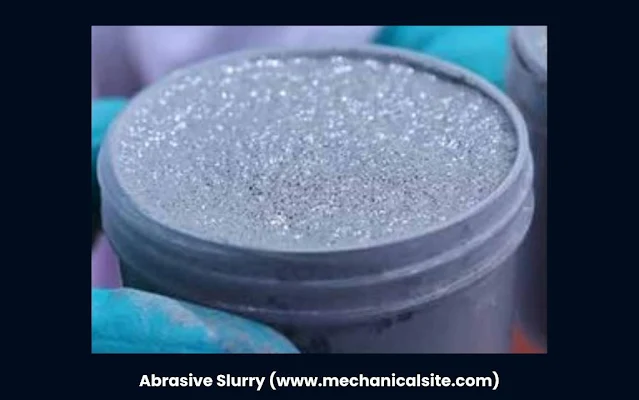Ultrasonic Machining - Working Principle, Advantages, Disadvantages, and Applications
All About Ultrasonic Machining Process
Ultrasonic machining (USM) is a mechanical material removal process that uses formed tools, vibration of high frequency, and an abrasive slurry to accurately erode or cut softer, brittle materials such as glass, ceramics, carbides, composites, and precious metals.

What is Ultrasonic Machining?
Ultrasonic machining is a non-traditional machining process that relies on an abrasive slurry and ultrasonic vibrations to remove material from a workpiece through the process of erosion. A tool made of ductile material vibrates ultrasonically while the abrasive slurry flows between the tool and the workpiece. As the tool vibrates, it continuously strikes and dislodges microscopic bits of workpiece material.
Ultrasonic machining is a mechanical material removal process that uses formed tools, high frequency vibration, and abrasive slurry to accurately erode brittle, hard and fragile materials by utilizing the abrasive particles in the slurry to impact the workpiece at high velocity.
Working Principle of Ultrasonic Machining
- The tool and workpiece are separated by a small gap filled with abrasive slurry.
- The transducer converts electrical signals into mechanical vibrations, causing the tool to vibrate at ultrasonic frequency (19,000 - 25,000 Hz).
- The abrasive grains in the slurry now act as a free cutting tool as they strike the workpiece thousands of times per second.
- The impacting abrasive grains chip away microscopic bits of material from the workpiece slowly eroding it to the desired shape.
- The surface finish and MRR depends on abrasive size, slurry properties, vibration amplitude and frequency.
Major Components

- Tool - Made of materials like stainless steel, titanium. It is shaped to the contour of cavity desired.
- Abrasive slurry - Generally silicon carbide or boron carbide in water. Acts as a free cutting tool.
- Workpiece - Brittle materials like glass, quartz, ceramics, composites.
- Transducer - Converts electrical signal into mechanical vibrations. Made of magnetostrictive or piezoelectric material.
- Fixture - Holds and positions the workpiece.
- Power supply - Provides electrical energy for transducer.
Advantages of Ultrasonic Machining
- Can machine brittle and fragile materials with precise dimensions
- No heat affected zone or thermal damage
- No stresses are induced in workpiece
- Complex profiles can be produced
- No burrs or distortion
- Eco-friendly process with no hazards
Disadvantages of Ultrasonic Machining
- Slow material removal rate
- Only useful for brittle, non-conductive and hard materials
- Dimensional accuracy is limited
- High power consumption
- Initial setup and equipment costs are high
Applications of Ultrasonic Machining
- Drilling holes in glass, ceramics, quartz, diamonds
- Cutting, shaping hard and brittle materials
- Machining irregular contours or cavities in hard materials
- Fine raster engraving in hard materials
- Drilling holes in jewel bearings
- Machining semiconductor materials like germanium
Process Parameters
- Abrasive - Silicon carbide, boron carbide, aluminum oxide
- Abrasive size - coarse (150 μm), medium (60 μm), fine (20 μm)
- Slurry concentration - 25-50% by volume
- Tool material - Stainless steel, titanium alloy, tantalum
- Tool size and shape - Depends on cavity required
- Frequency - 19 - 25 kHz
- Amplitude - 12 - 50 μm
- Electrochemical Machining: Key Features, Factors, Benefits & Applications
- Electron Beam Machining: Working Principle, Key Features & Applications
- Coating Process: Types, Applications, and Advantages
FAQs
What is ultrasonic machining used for?
Ultrasonic machining is typically used to machine hard, brittle, non-conductive and fragile materials like glass, quartz, ceramics, composites and precious stones. It can accurately cut complex shapes and holes without inducing any thermal damage.
How does ultrasonic machining work?
It works by using high frequency vibrations to drive abrasive particles in the slurry against the workpiece at high velocity. The impacting abrasives chip away microscopic bits of the brittle workpiece and erode it to the desired shape.
What tools are used in ultrasonic machining?
The tools are made of materials like stainless steel, titanium or tantalum. They are shaped to the contour of cavity desired and vibrate ultrasonically to continuously strike the abrasives against the workpiece.
What materials can be machined by USM?
Materials like glass, quartz, ceramics, germanium, composites, concrete, precious metals and carbides that are hard, brittle, and non-conductive can be effectively machined by ultrasonic machining.
What are the advantages of ultrasonic machining?
Advantages include no heat damage, no residual stresses, good dimensional accuracy, can machine complex shapes in brittle materials and environmentally safe process.






